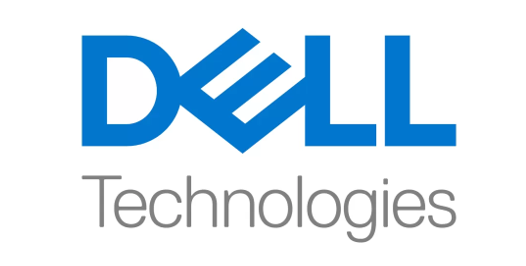In this special guest feature, our friends over at Advantech takes a look at the shift to edge computing environments versus large, secure data centers, a trend in stark contrast to the other end of the spectrum where large cloud providers and on-premise data centers offer a wide range of computing, networking and storage options within carefully controlled environments. Ultimately, we need both based on their respective value. But if we look deeper into what lies between the two extremes, we find the hybrid – rugged systems that bring the high-performance data center computing power and functionality to the edge. Advantech is a global leader in the fields of IoT intelligent systems and embedded platforms.
 Today, we’re seeing a greater shift to edge computing environments versus large, secure data centers. We’re surrounded by edge computing via the Internet of Things every day; watches, mobile devices, intelligent appliances and home assistants that consume low amounts of power, perform limited processing and are not expandable. This is in stark contrast to the other end of the spectrum where large cloud providers and on-premise data centers offer a wide range of computing, networking and storage options within carefully controlled environments. Ultimately, we need both based on their respective value. But if we look deeper into what lies between the two extremes, we find the hybrid – rugged systems that bring the high-performance data center computing power and functionality to the edge.
Today, we’re seeing a greater shift to edge computing environments versus large, secure data centers. We’re surrounded by edge computing via the Internet of Things every day; watches, mobile devices, intelligent appliances and home assistants that consume low amounts of power, perform limited processing and are not expandable. This is in stark contrast to the other end of the spectrum where large cloud providers and on-premise data centers offer a wide range of computing, networking and storage options within carefully controlled environments. Ultimately, we need both based on their respective value. But if we look deeper into what lies between the two extremes, we find the hybrid – rugged systems that bring the high-performance data center computing power and functionality to the edge.
It’s this middle ground marriage of portability and power blended with evolving needs and innovation in both hardware design and software capabilities, that’s enabling transformative progress in artificial intelligence, autonomous vehicles and automation.
- Artificial intelligence (AI) is revolutionizing our ability to make more timely, better informed decisions to interact with the world around us. This requires software and inference algorithms that can process, prioritize and extract data to mirror human thoughts, actions and reactions, but with consistency, speed and real-time learning that exceeds typical cognitive ability. For this to be most effective, the computing needs to be embedded within the environment to draw directly from live sensors, radar and cameras. It also requires near-zero latency for split-second, accurate decision making.
- Autonomous vehicles (AVs) are becoming a reality across all forms of both civilian and military transportation. From cars to semi-trucks to aircraft to submarines, on-board AI systems combine sensors, actuators and compute elements to generate real-time situational awareness. Most importantly, AVs require significant computing power for safe, real-time operation. But unlike a climate-controlled data center, the on-board computer system, must have proper air flow to keep the system from overheating, and must be able to withstand extreme shock, vibration and weather conditions to ensure seamless performance.
- The automation of routine tasks that require finite precision and consistency continues to expand. This is most prevalent in machined assembly, optical inspection and robotics. Again, similar to AVs, the enabling AI and machine learning computer hardware to be in close proximity to control and adjust operations in relation to process flow.
The reach of these three disciplines extend across nearly every industry, but for edge environments, several factors must be considered and tested before a computer system can be incorporated into a larger functioning system to ensure seamless operation and performance in harsh, unpredictable conditions. To illustrate, let’s look at Crystal Group’s RIA (Rugged Intelligence and Autonomy) system.
- Thermal Management: There are two major factors relative to temperature: the system’s ability to operate effectively in temperatures ranging from -40° C to 55° C with humidity between 5 and 95 percent, and its ability to manage the heat generated from its increased computing power. RIA offers both air and liquid cooling options to maximize compute density while directing excess heat outside of the vehicle.
- Shock and vibration resilience: Any moving object is subject to shock and vibration. However, AVs and the on-board computer systems are subject to extreme impacts from rough terrain, being struck by another vehicle or severe weather. To isolate the computer and maintain consistent operation, RIA is built and tested to meet or exceed demanding military, IEEE and IEC specifications.
- Components: – in systems that are subject to non-datacenter operating conditions, the highest quality and tested components must be used, to avoid component failure during operation.
The building blocks used to create an innovative and resilient server are industry-standard components that are integrated on state-of-the-art motherboards, as shown here on the ASMB-825. Combining the required CPU count via multiple sockets, multiple I/O paths, and fast networking allows system designers to create a computer system for demanding environments.
Industrial systems are inherently different from standard consumer or business systems. The biggest difference is that the overall system must remain operational for five to ten years, which is much longer than the typical three years of a standard business server. This means the overall design must incorporate high-quality, long-lasting components to ensure reliable, predictable performance. It’s critical that system designers consider the differences in components between suppliers to ensure they will ensure the intended lifespan of the rugged industrial system.
One caveat to these lengthy lifespans is the underlying technology. Frequent updates require the overall system design to accommodate changing motherboards easily without needing to overhaul the entire system.
Over time, industrial systems need to be replaced or updated. System integrators and end customers will likely seek the assurance that changes, such as updating a motherboard, will not require costly and timely re-certification of the application or operating environments. Advantech’s proactive approach includes notifying customers of any changes in replacement components and if re-certification may be needed. In addition, Advantech can lock down all the components in any motherboard configuration for the anticipated lifespan of the system to eliminate the need to replace the motherboard.
Advantech’s corporate vision is to enable an intelligent planet. The company is a global leader in the fields of IoT intelligent systems and embedded platforms. To embrace the trends of IoT, big data, and artificial intelligence, Advantech promotes IoT hardware and software solutions with the Edge Intelligence WISE-PaaS core to assist business partners and clients in connecting their industrial chains. Advantech works with business partners to co-create business ecosystems that accelerate the goal of industrial intelligence, as well as a wide range of partners to deliver solutions that are customized for specific and demanding use cases.
Crystal Group RIA™ combines impressive compute power, data-handling capabilities, and storage capacity in a compact, rugged solution that can withstand harsh conditions and environments – including potholes, collisions, and extreme temperatures that could cause traditional systems to fail. Available in custom or off-the-shelf configurations, Crystal Group RIA high-performance computers sport the latest Intel® processors, high-capacity DDR4 memory, and sophisticated power and thermal management stabilized in a size, weight, and power (SWaP)-optimized aluminum chassis.
Jump-start your AI, autonomous, automated, unmanned, or project today with Crystal Group RIA – available off-the-shelf or customized to specific requirements.
Learn more about Advantech at: https://www.advantech.com/
Find out more about how you can benefit from system boards from Advantech and the integration capabilities of Crystal Group. To learn about the state-of-the-art ASMB-825, which contains up to two Intel Xeon processors on a standard form factor ATX board, click here.




